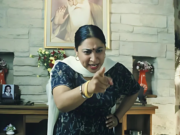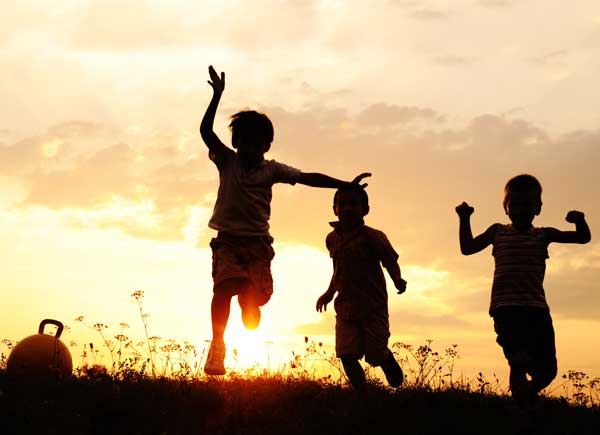It’s time to get back outside and enjoy Mother Nature to the fullest. To make sure everything stays fun and exciting, parents need to maintain a safe playground.
With the sun finally making its way into spring and class field trips in full swing, it’s that time of year when we parents are signing our kiddos up for outdoor activities such as camping and swimming. With that can come unwanted trips to the emergency room.
“Children’s maturity and their interests and needs differ from adults,” reads UNICEF’s World Report on Child Injury Prevention. Therefore, simply reproducing injury prevention strategies that are relevant to adults does not adequately protect children.”
Interestingly, a UK Journal of Public Health Medicine report suggests that South Asian children have lower rates of reported accidents. Whether that is due to overbearing parents with strict rules, it’s unsure. Being safe doesn’t have to mean losing out on fun as no one wants to be the helicopter parent. By following some easy safety guidelines, we can ensure things stay fun with the world continuing to be explored.
Playground safety
“Choose a playground that has a deep, soft surface, like pea gravel, sand, wood chips or rubber tiles,” recommends prevention program Child Safety Link. Appropriate clothing ( no long necklaces or scarves) is essential, but constant supervision is the best. Sit and relax on a nearby bench, but make sure to keep an eye on what the little one is up to. We all know what they can manage to do in only a few seconds of unsupervised times.
Dog bites
There are so many benefits to children having relationships with animals. However, according to Centers for Disease Control and Prevention, the rate of dog bite–related injuries is highest for those ages 5 to 9 years. We need to teach our children to never approach and pet a strange dog without both their guardian’s and pet owner’s permission.
Falls
Kids fall, it happens. But there are some falls that can be more harmful than others, and can be prevented. Keeping our children’s’ heights in mind, we can see what playground equipment is too high, or what stairwells are dangerous. Make sure to also keep an eye out for slippery or uneven surfaces.
Swimming
Whether it is in a home’s backyard or in a recreating centre, kids need to be supervised in the pool. “Drowning is the second most common cause of death from injuries among kids under the age of 14,” reads KidsHealth.org
Proper swimming gear such as a life jacket and other floatation devices, should be worn at all times. Rules need to be strictly obeyed and enforced: no running, no going in the pool without adult supervision, no pushing, jumping or playing rough. Water temperature should always be checked before anyone gets in.
Trampolines
Growing up we were told not to jump on the bed because we could fall and break our necks; so how did kid trampolines become an acceptable pastime? Great for that desperate parent in need to tire out their rambunctious little one, but The American Academy of Pediatrics strongly discourages using trampolines” “Most trampoline injuries occur with multiple simultaneous users on the mat. Cervical spine injuries often occur with falls off the trampoline or with attempts at somersaults or flips.”
We hope these tips come in handy when you’re looking to keep your child safe outdoors.
Featured Image Source: humanresources.tennessee.edu
Activities, Anokhi Blogs, Anokhi Media, Backyard, Camping, Essential, Family, Fun, Hillary Di Menna, Kids, Kids Health, Outdoors, Outside, Pediatrics, Playground, Playtime, Program, Public, Relationships, Rules, Safety, Slippery, Spring, Summer, Swimming, Trampolines, Unicef, Unsupervised, World
Hillary Di Menna
Author
Hillary Di Menna is a freelance journalist who manages to publish her scribblings while raising a six-year-old skateboarding ballerina and sharing her home with two snuggly black cats. Her parenting blog, Misfit Matriarch, follow her adventures in parenting. You can find all her work at
COMMENTS
YOU MAY ALSO LIKE
-

Picnic Like A Pro: Easy South Asian BBQ Recipes To Wow Everyone
-

This Might Get Heated: The Ultimate Chai Ranking No One Asked For
-

The Ultimate Mother’s Day Gift Guide For Your Desi Mom
-

Ever Hosted A Desi Picnic? Here Is Your Ultimate Guide To Wowing Your Family & Friends
-

'Detective Aunty' & 9 Other Must-Read Spring 2025 Books By South Asian Authors
-

Beyond Samosas: Healthy & Satisfying Ramadan Suhoor And Iftar Recipes!
-

6 Ways South Asian Parents Can Teach Their Children About Black History Month
-

Rose Barfi, Chocolate Naan Khatai & More: South Asian Dessert Recipes For Valentine's Day
-

From Birth Charts To Lunar Calendars: Setting Intentions For 2025 With South Asian Traditions
-

How To Host The Perfect South Asian Holiday Dinner
-

ANOKHI's Holiday Gift Guide For Thoughtful Desi Presents For The Home & Beyond
-

Not Into Flu Shots? Try These Centuries-Old Desi Home Remedies Instead!
-

Diwali Gift Guide: Barbie® Diwali Doll & 8 More Unique South Asian Gift Ideas
-

From Turkey To Tadka: Desi-Inspired Thanksgiving Recipes
-

Mommy's Time-Out: How To Reclaim Your Zen After The Back-to-School Scramble
-

Khichdi Cups & 5 South Asian School Lunch Recipes For Busy Desi Parents
-

6 Complaints Desi Grandparents Have About Keeping Pets & How You Can Counter Them
-

Raksha Bandhan Gift Guide: Celebrate The Festival With A Modern Twist!
-

Summer Elixirs: Healthy South Asian Cooling Drink Recipes To Beat The Heat
-

Stay Cool: Build a Summer Garden Oasis At Home With Tulsi & Shade
-

Celebrating International Yoga Day: Find Your Balance Through Chakra Meditation
-

Spice Up Your Summer BBQ With These 5 Mouthwatering South Asian Recipes
-

South Asian Heritage Month: Journey Through Time With 8 Iconic South Asian Travel Destinations
-

How To Add Ancient South Asian Spiritual Cleansing Rituals To Modern Spring Cleaning Techniques
-

Toronto's Living Luxe Design Show Sets a New Standard for Luxury Exhibitions
-

Savouring South Asian Style: Elevate Your Home Decor with Cultural Flair
-

6 Ways To Create Fun Quality Time With Your Kids & Parents That Both Will Love!
-

Celebrating South Asian Literature: Must-Read Books by Female Authors
-

Flavourful Festivities: Traditional Holi Recipes To Spice Up Your Table
-

The Living Luxe Design Show Presented By JennAir Announces Powerhouse Program Of Speakers
-

7 Ways Yoga Will Save Your Mental Health
-

Ask Dr. Monica Vermani: How Can I Convince My Friend That Her Threatening Boyfriend Is The Problem, Not Me?
-

10 Tips To Manage & Survive Long-Distance Relationships
-

Ask Dr. Monica Vermani: I'm Afraid My Childhood Bully Will Be Back In My Life, What Do I Do?
-
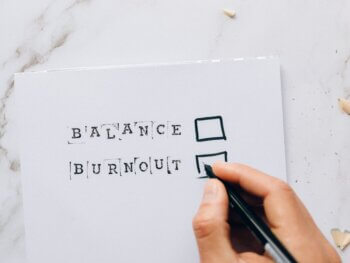
Ask Dr. Monica Vermani: How Do I Create "Me Time" In My Demanding Life?
-

Hot Spot Alert: Mishree Cocktails & Cuisine Exhilarates With South Asian X Middle Eastern Cuisine
-

BioAro Founder Dr. Anmol Kapoor Wants You To Be The CEO Of Your Health
-

Savour the Holidays With This Paneer Pakora Recipe By KFI Sauces!
-

Here's How To Craft And Achieve Meaningful New Year's Resolutions
-

Snack It Up This Holiday Season with Indian-Inspired Potato Wedges by KFI Sauces
-

Butter Chicken Nachos Recipe By KFI Sauces Is Perfect For Your Holiday Spread
-

Ask Dr. Monica Vermani: How Do I Tell My Friend She's Taking My Emotional Support For Granted?
-

Anjali Pathak of Patak's Shares Her Favourite Recipes For The Holiday Season
-

Ask Dr. Monica Vermani: Why Does Our Family Get Togethers Always End With A Fight?
-

Ask Dr. Monica Vermani: How Do I Tell My Sis-In-Law To Stop Intruding In My Daughter's Wedding Plans?
-

Event Alert: The Auric Living Conference Brings Holistic Healing To Toronto
-

Ask Dr. Monica Vermani: I'm On The Outs With My Friend Because I Supported Her Breakup What Do I Do?
-

Event Alert: The Desai Foundation Rings In 10th Anniversary of "Diwali On The Hudson" Gala
-
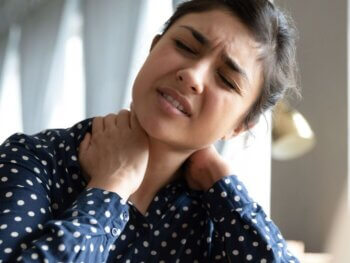
South Asians & Arthritis: Busting Myths And Sharing Facts About This Disease In Our Community
-

Ask Dr. Monica Vermani: How Do I Convince My Kids That My Granddaughter's Best Friend Is A Bully?
-

Make Your Brunch Brilliant With This French Buckwheat Crepes & Dosas Recipe!
-

Ask Dr. Monica Vermani: How Do I Tell My Sis-In-Law That Her Messy Dog Is Not Welcome At My House?
-

You Just Need A Hot Pot To Make This Amazing Masala Style Vegan Tomato Soup
-

Ask Dr. Monica Vermani: How Do I Tell My Friend To Stop Interrupting Me?
-

Ask Dr. Monica Vermani: How Do I Trust My Husband After He Cheated On Me?
-

Check Out This Insane Recipe For Mini Masala Idli
-
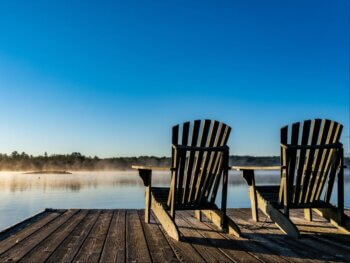
Ask Dr. Monica Vermani: How Do I Tell My Brother That His Cottage Rules Ruins All The Fun?
-

Ask Dr. Monica Vermani: What Do I Do When My Fiancé Shares His Dog With His Ex?
-

Ask Dr. Monica Vermani: How Do I Convince My Partner That Our Six-Year-Old Is To Young For Sleepovers?
-

Ask Dr. Monica Vermani: How Do I Deal With My Friend Who Always Wants To Start A Fight?
